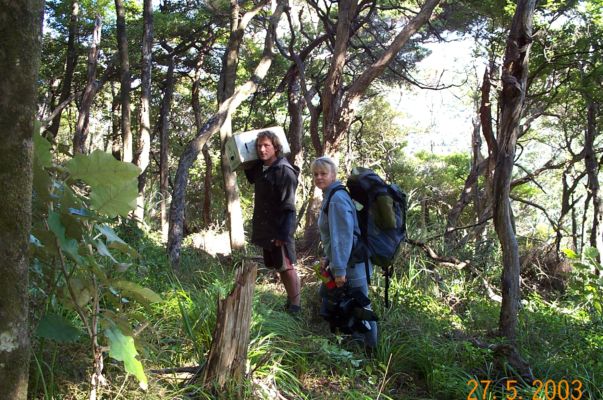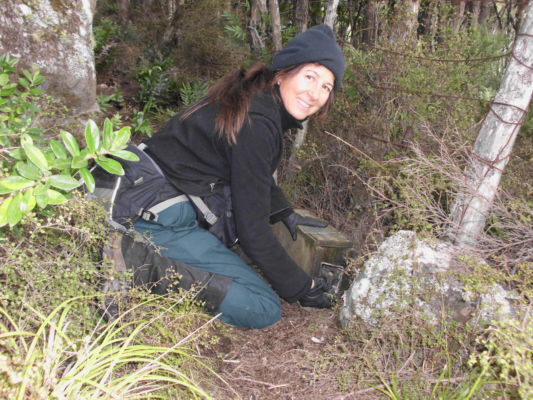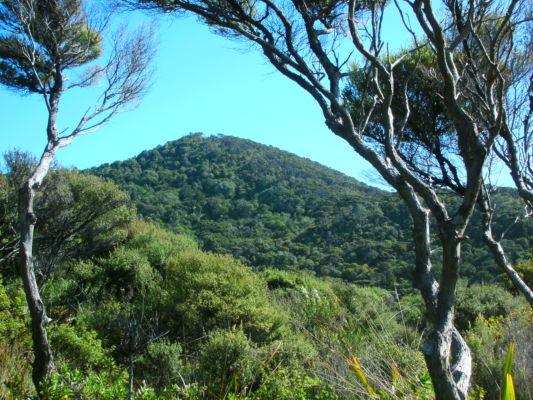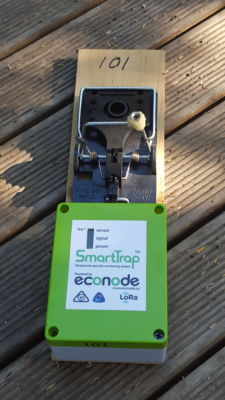Conservation projects can benefit more than just the local wildlife. There can be significant community benefits too. When a community benefits, their support for conservation grows. Everybody wins. A long-running restoration project on Great Barrier Island shows just how much a local community can gain if a commitment is made to help local people through employment opportunities.
“There aren’t a lot of jobs on Great Barrier Island,” explains Judy Gilbert, founder and voluntary manager of the Windy Hill Rosalie Bay Catchment Trust, “And there aren’t a lot of training opportunities for unemployed people to gain skills. Great Barrier is the poorest area in the Auckland region. We made it a core objective from the beginning to provide employment when we set up the Trust.”

The Trust was officially set up back in 2001, although restoration work had already been going on in the Windy Hill catchment for a couple of years prior to the Trust’s official formation.
“Some of our workers had been unemployed for long periods,” Judy says, “including Dean Medland who has been with us from the beginning. In 18 years he’s had a whole lot of roles with the Trust as he’s gained expertise. Now he runs the contract work we do outside the sanctuary which brings in funds. Our field manager, Kevin Parsons has been with us for 15 years and another field worker, Rachel Wakefield, 12 years. A total of $1.4 million has been paid out in wages over an 18 year period.”
The benefits to Great Barrier are not just economic. There are social benefits as well, as long term unemployed people gain new skills, a good work ethic and pride in the work they’re doing. They have much to be proud of.
“Eighty kilometres of tracks with 5000 bait stations and 70 cat traps have been established in four pest project areas to remove rats, mice, and feral cats. Since 1999, when predator control began, 48,000 rats, 320 feral cats, 300 goats, and 75 pigs have been removed. Rat tracking tunnels generally average 5 -12% compared to a control project on an unmanaged site which has an average of 60-85%.”
An extensive monitoring programme tracks the results.
“A monitoring programme has been in operation since 2000. Bird monitoring is undertaken annually and supervised by ecologist John Ogden. Monitoring is undertaken for weta, invertebrates, and lizards every six months, and seedlings every five years. Freshwater stream monitoring was introduced in 2004. Monitoring tunnels are set for rats five times a year.”
The results are impressive and a credit to Judy’s team.
“The Sanctuary is home to brown teal duck, black petrels, Duvaucels gecko, chevron and striped skinks, kaka, and kereru. Bird numbers per hectare have doubled, lizard sightings are now common, and weta are abundant.”
Locally extinct species have begun to be reintroduced too.

“The first translocation of North Island robins – a regionally extinct species – was carried out in 2004 with a booster translocation of 25 robins in March 2009 and another in 2012. Over 140 young have fledged since 2004. Two rare chevron skinks were released at Windy Hill by DOC in 2004 and three pateke released in 2011. In January 2011 a Duvaucels skink was trapped – the second only sighting in 40 years.”
A total of 21 people have been employed over an 18 year period, with six employed currently at Windy Hill. Five of those work out in the field and one long time employee organises the administration work.
A key part of Judy’s volunteer role as manager is to make sure that funds continue to be raised so that restoration work continues and the local employment that the Trust creates is sustainable.
“Organisations are very reluctant to fund wages,” Judy explains “We argue that in locations like Great Barrier, the economic element is paramount. We need sustainable jobs and we have to be dogged in applying for funding. With public money we also have to be very accountable and really show measurable outcomes. We are trail-blazers,” she continues.
The rewards for all that dogged funding-application work are huge, however.
“Seeing people valued – which they’re not as long-term unemployed – then seeing them develop, that’s awesome,” says Judy. “It warms my heart as much as the ecological gains. “They trust me to keep them safe and get the money we need and I trust them to do the field work that on the whole is unsupervised.”
The Trust’s work now extends beyond the boundaries of Great Barrier, in part due to an education fund started up by Judy’s husband, who makes a monthly donation to support ongoing staff training. That fund enables a staff member to go off Great Barrier Island annually to take part in further training or to gain additional practical experience by helping out at other sanctuaries or conservation projects.
“They might attend a training course on the mainland,” says Judy. For example, Kevin, part in a 2-day Landcare Research project in 2015 and Rachel visited Tiritiri Matangi in 2016. Younger staff members have been sponsored to complete NZQA qualifications. One of our field team also helped out on the Cape Kidnappers translocation of seabirds from Little Barrier Island.”

It’s a long way from the six rat traps that Judy placed under her house when she first moved to Great Barrier Island.
The Windy Hill property is owned by fifteen shareholders and was purchased in 1972 when Judy was just nineteen. “I’ve lived here full time since 1994 – 23 years – and this land is now my turangawaiwai,” she says.
Judy herself contributes around 15-20 volunteer hours per week to the Trust, as well as attending conferences, such as those run by Sanctuaries New Zealand, of which the Windy Hill Rosalie Bay Trust is a member.
“Where possible I try to do a presentation at conferences,” says Judy. “It’s a way to share experience from a community group perspective with the ‘big boys’. I get to meet some extraordinary people and go to some great places.
With local landowner and Professor of Ecology, John Ogden as one of the Trustees, the Trust is also well guided. Over time the Sanctuary has become very involved in innovation, testing new methods and technology and carrying out good ‘citizen science’.
“John collates the raw data into something publishable,” Judy explains. “He has processed the bird monitoring results since 2000 and writes results up as ‘pure science’. We’ve had two papers published in ecological journals.”

Current innovations being trialled include Econode – a trap sensor project which will send a signal to a computer or cell phone when a trap is triggered. A longlife lure is also being tested.
“We are working towards saving time so that we can cover more area with the same number of field workers” says Judy. “We’ve been trialling ‘Nara’ longlife lures, a scented plastic plug that goes into a SnapE rat trap. It’s not as good as peanut butter, but we found that if we soak the lure in peanut oil that makes it more appealing to rats.”
Another tip Judy is keen to share with other community conservation groups, relates to disposing of bait once it’s past its use-by date.
“Dumping a lot of old rat bait in the landfill can cause social negativity,” Judy says, “so we put our old bait in worm farms. We’ve collected the wormcasts and sent them to Landcare Research’s toxicology lab and after 6 months there’s no trace of toxins.”
Responsible bait disposal, sustainable work for previously longterm unemployed local residents, ongoing worker training and a thriving, vibrant, enriched wildlife sanctuary are just some of the ways that Great Barrier Island’s Windy Hill Sanctuary illustrates the journey to a predator-free vision.
“It’s a working model of what can be achieved by community,” Judy says, “It shows our community what happens if we reduce pests.” The Trust is committed to a predator free Great Barrier.

